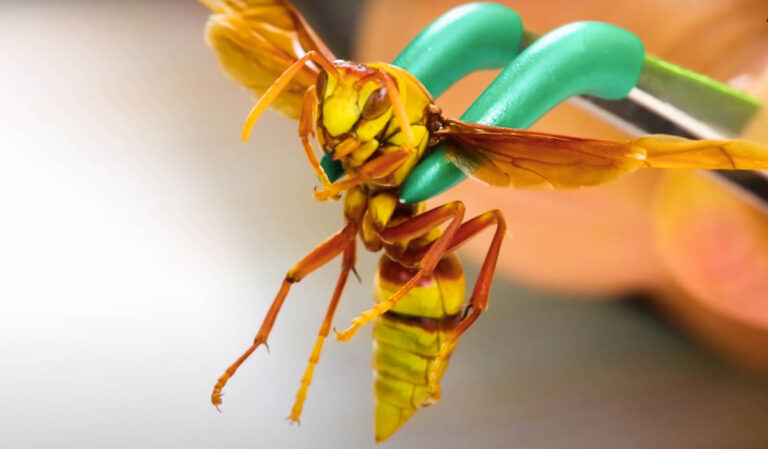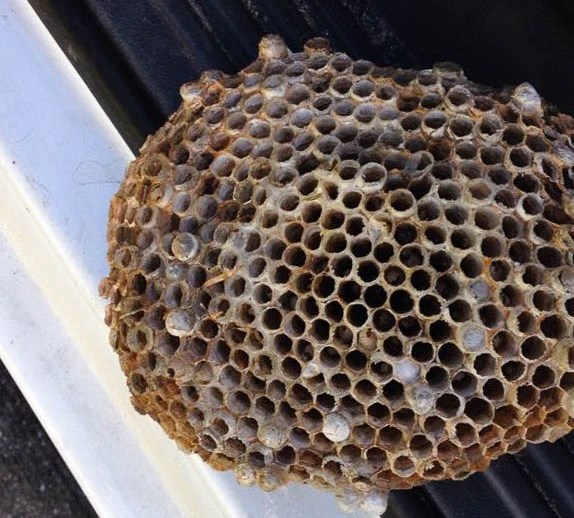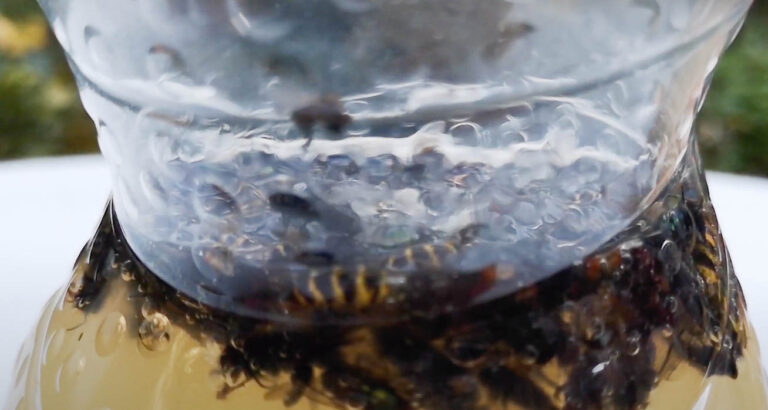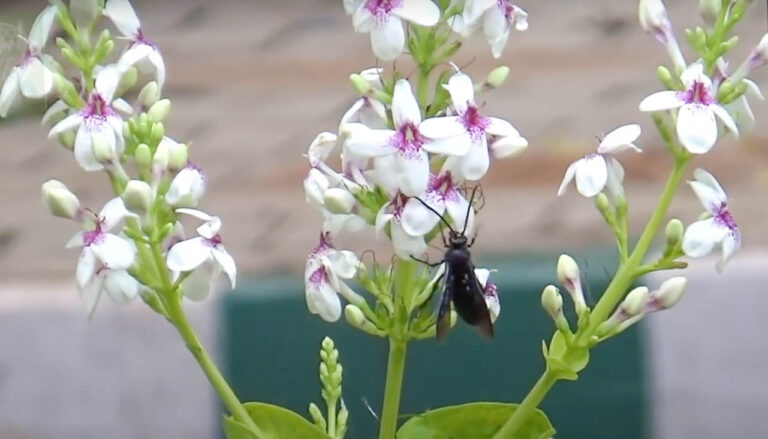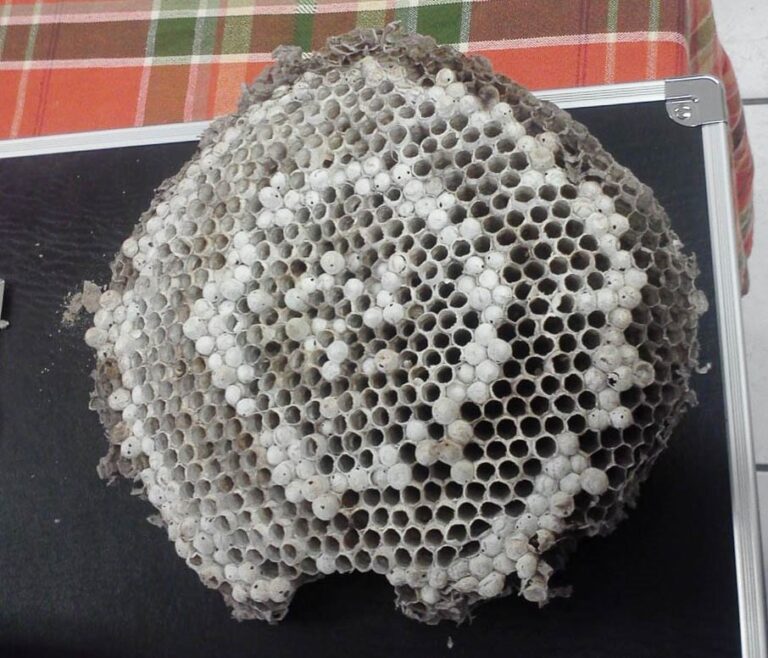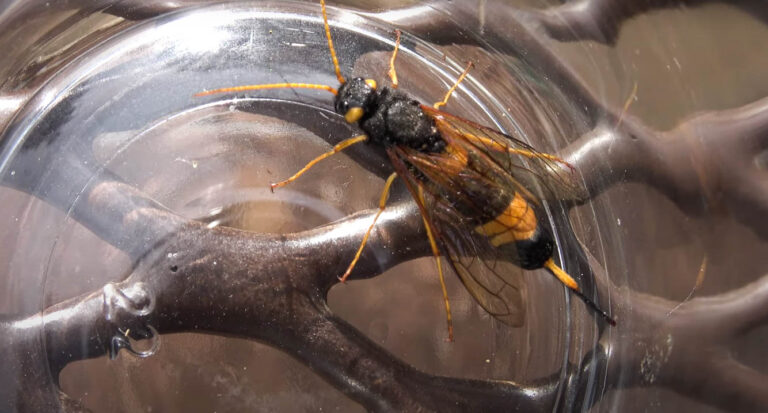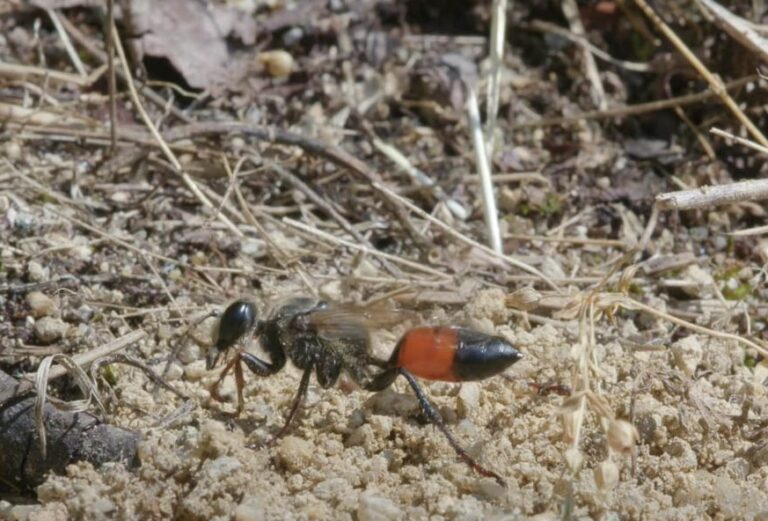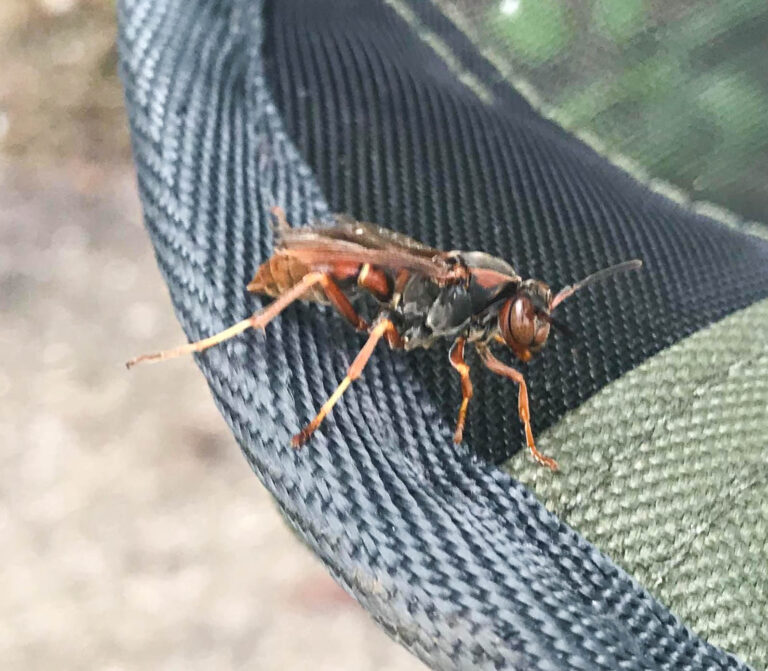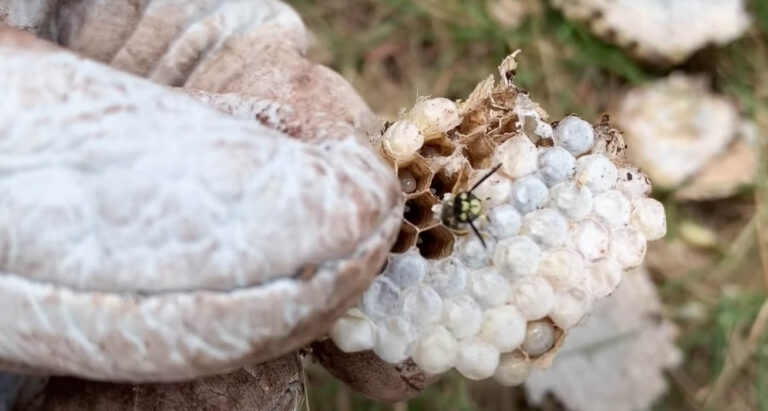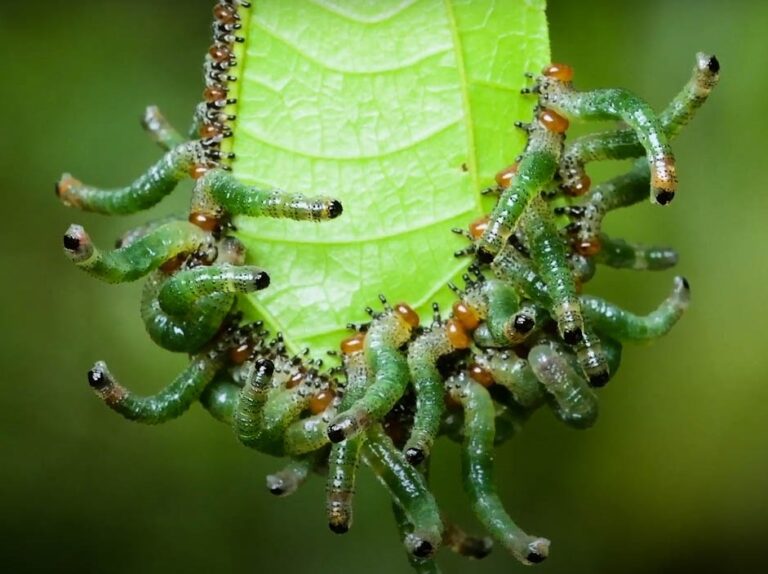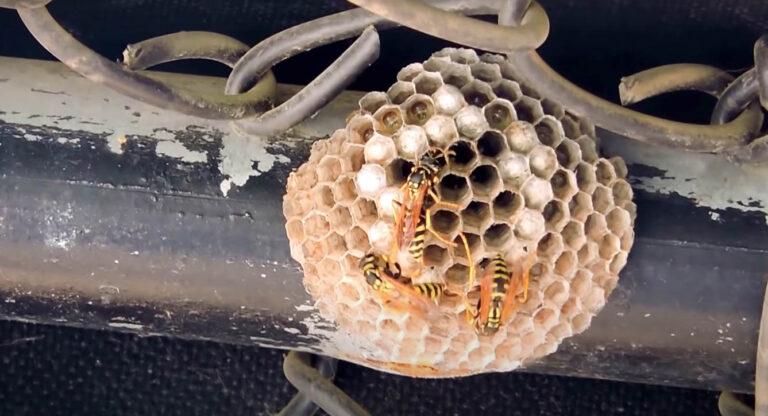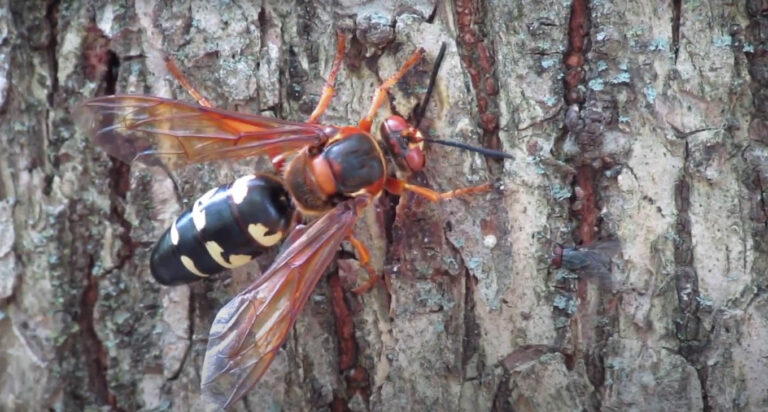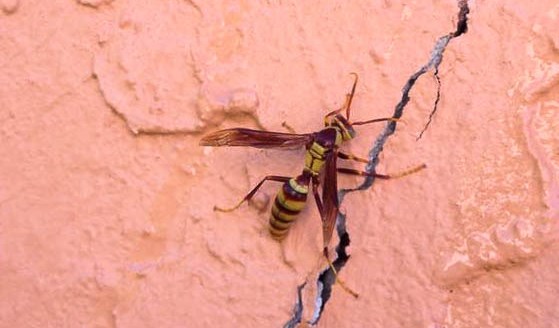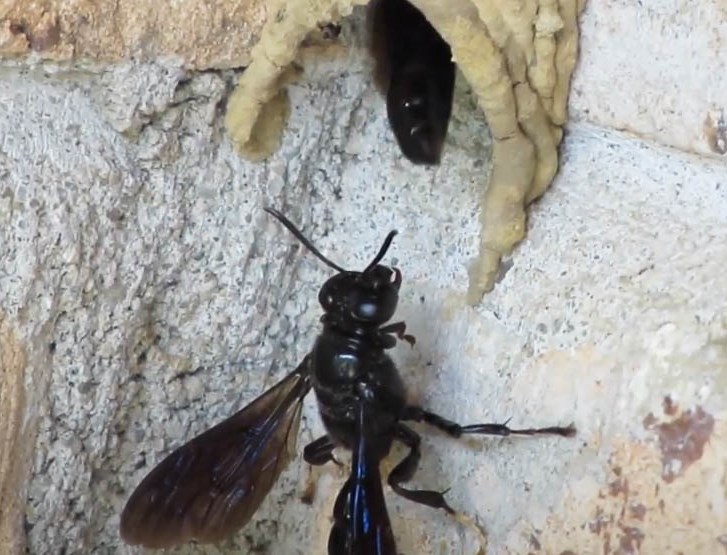About Red Wasps
About Red Wasps
Red wasps can be found all across North America but they tend to be found more in the Eastern and the Midwestern region. If you have noticed a colony of red wasps living on your property, you may not know too much about this except that they are red and they look like the body of a wasp.
The red wasp likes to search around for nectar and the goldenseal tends to be the best choice.
Appearance
Red wasps have a red body with wings that are a dark black colored with a purple tint. They can also be a rusty red, brown, yellow, or orange.
They can grow up to ½ to 1 ¼ inches long. The body of a red wasp is long and slender and they have long legs that come down below their body.
The stinger on the red wasp can be intimidating because it is very long and exits the abdomen.
The head of the red wasp is noticeably different. They are able to use their mouth to chew. The antenna is short and bends downward above the eyes.
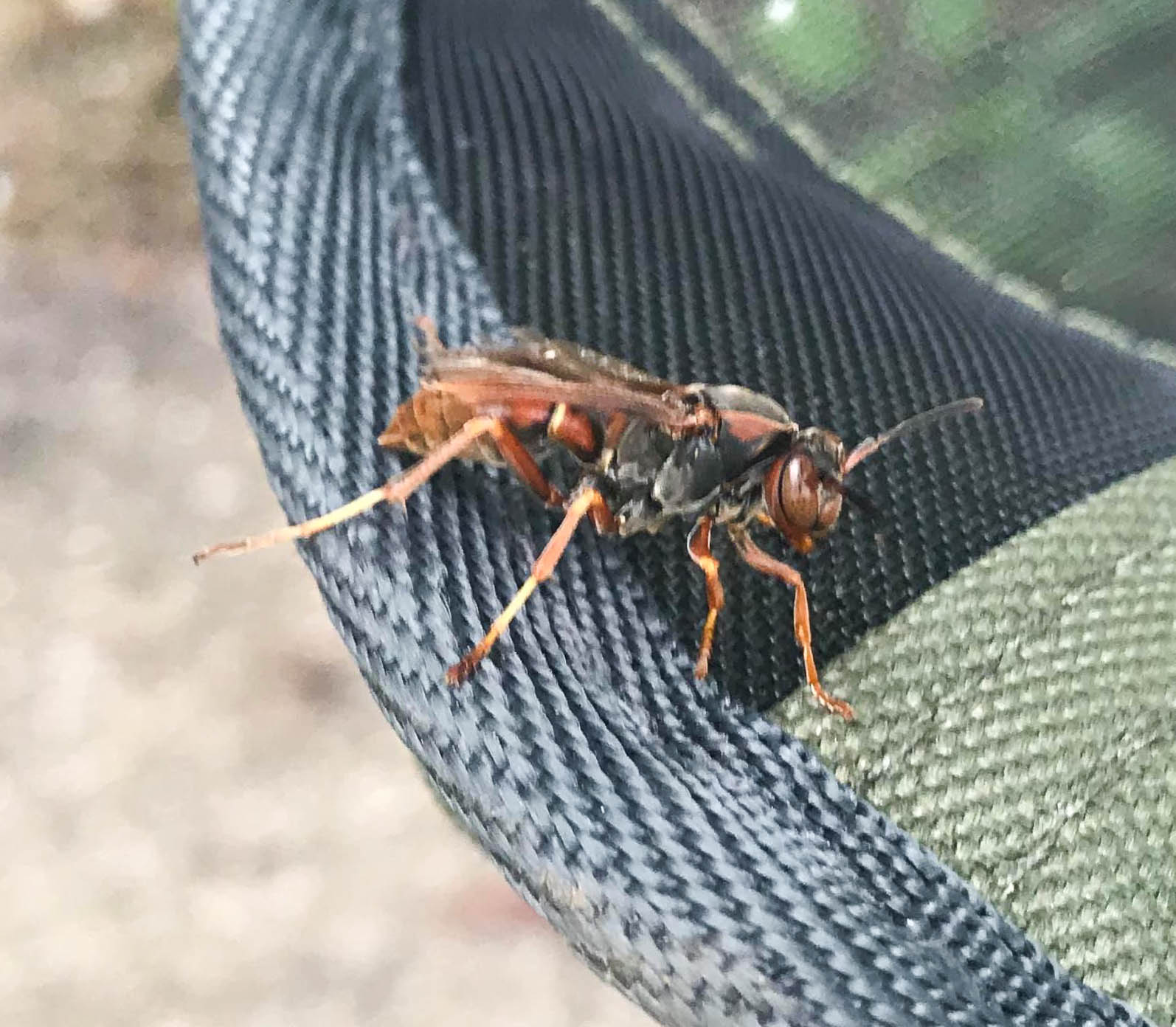
Behavior
You can normally see the red wasp buzzing around during the day and resting back at their nest at night. They will be out for longer periods of time once the weather becomes warmer.
They begin the season with the queen coming out of hibernation once the winter is over and spring sets in. Once she emerges, she will immediately begin her search for a place to build her nest.
Wasps are normally beneficial to the environment because they will capture their prey which may also be pests to you. They do not normally come after humans or pets unless they feel threatened by them.
Wasps are social insects so their colonies consist of fertile queens, sterile workers, and males.
Life Cycle
The life cycle of red wasps occurs in stages;
The first stage is the eggs that come from the queen during the spring. Once she builds her nests and feels safe to do so, she will lay one egg in each nest cell she has created within the inside of the walls. Once the eggs are laid, stage two occurs.
Stage two is the larvae that hatches from the eggs. These larvae look like grubs and they are fed chewed up insect parts until they are ready for stage three.
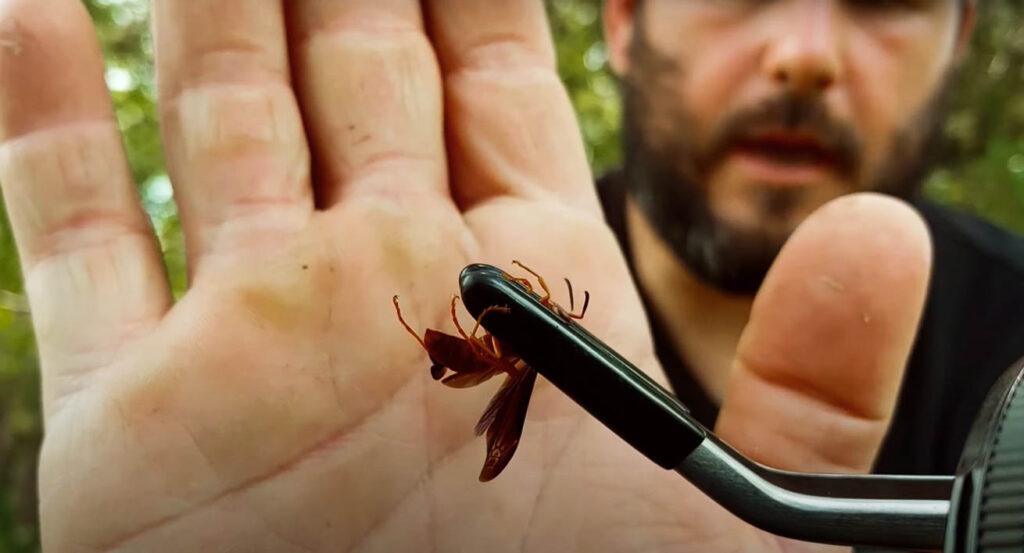
Stage three is the pupae stage. The larvae will then place themselves into a cocoon until they are ready to emerge in stage four.
Stage four is the adults that emerge from the cocoons.
Once adults are able to, they will provide food to the larvae that is still in the cell walls. While the adults tend to the larvae, the queen will continue to lay more eggs.
By late summer and into the early part of fall, the worker wasps will begin to die off. The males and females will mate and then the males will die. The females will go into hibernation for the winter until they emerge next spring.
Habitat
Red wasps will not reuse a nest that is still standing the next spring. So they will go out and create their own nest using chewed plant material, wood, and wasp saliva.
You will find wasp nests around windows and door frames, underneath decks, around or inside outbuildings, and inside of eaves. The adult workers as well as the males will go around collecting nectar from sweet flowers, liquid containers that may have been hung up by humans, and sweet-smelling food waste.
A typical red wasp paper nest will feature an open single comb with cells that are hexagon shaped. The nest will resemble an umbrella that is upside down.
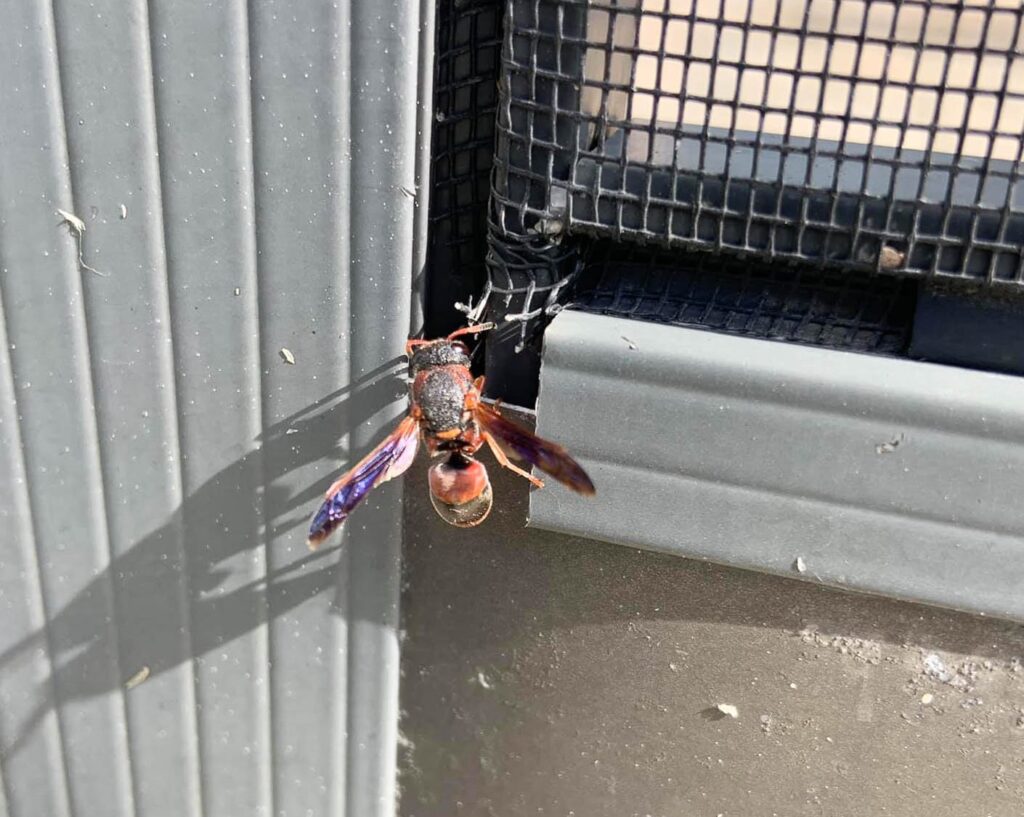
Conclusion
A single red wasp can sting over and over again. If you have been stung, you will want to run and get away from the wasp or it will continue to sting you. Once you are safely away, apply ice on the sting site immediately to stop or slow down the spread of venom in the bloodstream.

